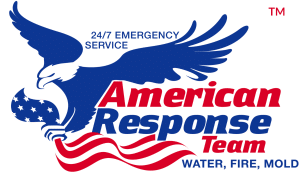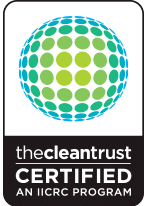Water damage can be a nightmare to deal with, especially if you’re not equipped with the right knowledge and tools. Whether it’s caused by heavy rain, a burst pipe, or a malfunctioning appliance, water damage can cause extensive and costly damage to your home or office. But don’t worry, you don’t necessarily need to hire a professional to handle the restoration process. With a bit of DIY know-how and the right equipment, you can restore your property to its pre-damage condition. In this article, we’ll explore everything you need to know about DIY water damage restoration, including common causes of water damage, tools and equipment you’ll need, and step-by-step instructions on how to get the job done right. So, if you’re looking to save money and take control of your water damage restoration, keep reading!
Understanding water damage restoration
Water damage restoration is the process of restoring a property to its pre-damage condition after water has caused damage. This can be caused by a variety of factors such as heavy rain, floods, burst pipes, or malfunctioning appliances. Water damage can be devastating and can cause damage to the structure of the building, as well as to personal items and belongings.
The restoration process can be a lengthy and expensive process, especially if you’re not equipped with the right knowledge and tools. While it’s always advisable to hire a professional restoration company, you can also choose to handle the process yourself if the damage is not too extensive.
The importance of acting quickly
When it comes to water damage restoration, time is of the essence. The longer the water is left standing, the more damage it can cause. Water can seep into walls, floors, and ceilings, causing mold and mildew to grow. This can lead to serious health problems, especially for those with respiratory issues.
Acting quickly can help to minimize the damage and prevent further problems down the line. As soon as you notice water damage, it’s important to start the restoration process immediately.
Assessing the damage
Before you can start the restoration process, you’ll need to assess the extent of the damage. This will help you determine the tools and materials you’ll need, as well as the level of restoration required.
Start by identifying the source of the water damage. This could be a leaking roof, a burst pipe, or a malfunctioning appliance. Once you’ve identified the source, you can start to assess the damage caused. Check for standing water, wet walls or floors, and any signs of mold or mildew growth.
Necessary tools and materials
To successfully restore your property, you’ll need to have the right tools and materials on hand. This includes:
- Protective gear such as gloves, goggles, and masks
- Sump pump or wet/dry vacuum
- Dehumidifier and air mover
- Fans
- Moisture meter
- Cleaning supplies such as bleach, disinfectant, and detergent
Having the right tools and materials on hand can help to make the restoration process smoother and more efficient.
Water removal techniques
The first step in the restoration process is to remove any standing water. This can be done using a sump pump or wet/dry vacuum. If the water is not too deep, you can also use a mop and bucket to remove it.
Once the standing water has been removed, you’ll need to use a moisture meter to check for any hidden pockets of water. Use a dehumidifier and air mover to dry out the space and prevent mold and mildew growth.
Drying and dehumidifying your space
After the water has been removed, it’s important to dry out the space thoroughly. This can be done using a dehumidifier and air mover. The dehumidifier will help to remove any excess moisture from the air, while the air mover will help to circulate the air and speed up the drying process.
It’s important to keep the space well-ventilated during the drying process. Open windows and doors if possible, and use fans to help circulate the air.
Cleaning and sanitizing surfaces
Once the space has been thoroughly dried out, it’s important to clean and sanitize all surfaces. This includes walls, floors, and any personal items that may have been damaged.
Use a mixture of bleach and water to clean and disinfect surfaces. This will help to kill any bacteria or mold that may be present. Be sure to wear protective gear such as gloves and a mask when cleaning with bleach.
Restoring damaged items
If any personal items have been damaged, you may be able to restore them to their pre-damage condition. This includes items such as furniture, electronics, and clothing.
For furniture and electronics, it’s important to remove them from the water-damaged area as soon as possible. Wipe them down with a dry cloth and allow them to air dry. If the items are too damaged to be restored, you may need to dispose of them.
For clothing and other textiles, wash them in hot water with detergent and bleach. Be sure to check the care label before washing.
Preventing future water damage
After the restoration process is complete, it’s important to take steps to prevent future water damage. This includes:
- Regularly inspecting your roof for leaks
- Checking your appliances for leaks or malfunctions
- Sealing any cracks or gaps in your walls or foundation
- Installing a sump pump or water alarm
Taking these preventative measures can help to reduce the risk of water damage in the future.
When to call a professional
While DIY water damage restoration can be a cost-effective option, there are some instances where it may be necessary to call a professional. This includes:
- Extensive damage to the structure of the building
- Mold or mildew growth
- Electrical hazards
- Sewage backup
In these instances, it’s important to hire a professional restoration company to handle the restoration process. They will have the experience and equipment necessary to handle the job safely and efficiently.
Conclusion
Water damage can be a stressful and costly experience, but with the right knowledge and tools, you can handle the restoration process yourself. Remember to act quickly, assess the damage, and have the necessary tools and materials on hand. Use water removal techniques, dry and dehumidify the space, clean and sanitize surfaces, and restore any damaged items. Take steps to prevent future water damage and call a professional if necessary. With these tips, you can successfully restore your property to its pre-damage condition.


